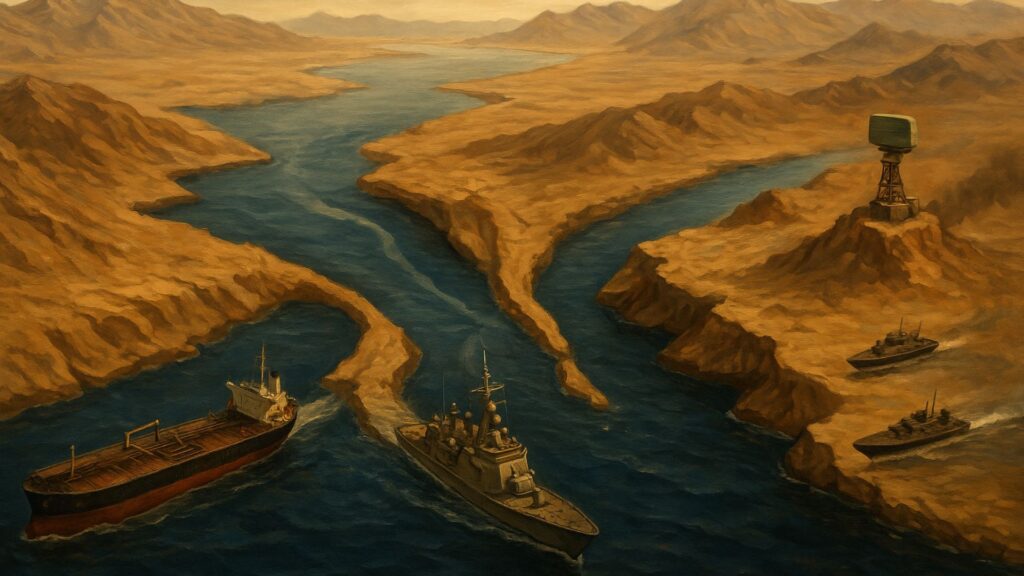Tensions have escalated following recent US airstrikes on Iranian nuclear facilities, and once again, the Strait of Hormuz is under global scrutiny.
This narrow maritime passage may seem geographically small, but it plays an outsized role in the global energy system.
The ripple effects could be immediate and far-reaching if it were to be obstructed, from surging oil prices to inflation and market instability. Understanding this key corridor is essential to recognising how fragile and interdependent the global economy is.
What is the Strait of Hormuz?
The Strait of Hormuz is a 33-kilometre-wide channel that connects the Persian Gulf to the Gulf of Oman and the Arabian Sea. Despite its size, it handles nearly 20 million barrels of oil per day, or around 20% of global oil consumption.
The Strait is essential for the export of crude oil from Saudi Arabia, Iraq, the United Arab Emirates, Kuwait, Qatar, and Iran. Most of this oil flows eastward to energy-hungry economies in Asia.
China, India, Japan, and South Korea are among the most affected by any disruption in this route. More than 80% of the oil transported through the Strait of Hormuz is bound for these four countries.
If shipping were obstructed, they would face increased fuel costs, supply chain instability, and economic pressure. The global economy would not be spared. A rise in energy costs would feed into inflation, reduce consumer purchasing power, and complicate central bank policies worldwide.
Iran, which controls the northern side of the strait, has the military capability to temporarily block access. Its naval base at Bandar Abbas offers direct access, and its forces are equipped with fast boats, submarines, sea mines, and anti-ship missiles.
While the United States and its allies can restore freedom of navigation, even a short disruption could lead to a significant economic shock.
The Strait of Hormuz is not just a trade route. It is a strategic choke point. Any prolonged instability would likely push oil prices higher, trigger investor panic, and shift economic forecasts across multiple regions. Policymakers and markets alike watch this waterway closely for good reason.
Could a Blockade Disrupt the Financial Market
Geopolitical events that impact energy prices often trigger immediate reactions in financial markets. If the Strait of Hormuz were blocked, oil prices would likely rise sharply. This could fuel inflation globally, particularly in energy-importing nations.
Equity markets would likely retreat as investors reassess risk, while haven assets such as gold and US Treasuries could rise. The crypto market, though structurally different, would not be immune to such macroeconomic shifts.
In the short term, crypto assets may fall along with other risk assets. Bitcoin and Ethereum often experience declines during periods of global panic as investors reduce exposure to volatile markets. Liquidity can decline, leading to more pronounced price swings.
However, over time, crypto markets may begin to decouple from traditional sentiment. In a scenario where inflation rises, monetary policy tightens, or fiat currencies weaken, decentralised assets could gain renewed appeal.
Bitcoin’s limited supply and independence from central banks are central to its narrative as a hedge against systemic instability. If that narrative takes hold, crypto could begin to recover even as other markets remain volatile.
There are also structural implications. A prolonged disruption in oil shipments could push countries like China and Iran to accelerate trade settlement in alternative currencies or systems.
This may eventually open the door to blockchain-based financial infrastructure and stablecoin adoption. While that transition is complex and gradual, geopolitical shocks often act as catalysts for change.
For now, crypto’s response would depend on how long the disruption lasts and how the broader market reacts. But if trust in traditional systems falters, digital assets may become more than speculative instruments. They may be seen as strategic alternatives.
Conclusion
The Strait of Hormuz may be geographically narrow, but its economic importance is enormous. Nearly 20% of the world’s oil moves through this passage, and any disruption could shake the foundations of energy security, financial stability, and global trade. The immediate impact would be felt in higher prices and market volatility.
Over time, it could alter how energy is traded, how markets operate, and how nations manage economic risk. In this way, one small strait holds the potential to reshape the global economy and the tools we use to navigate it.

